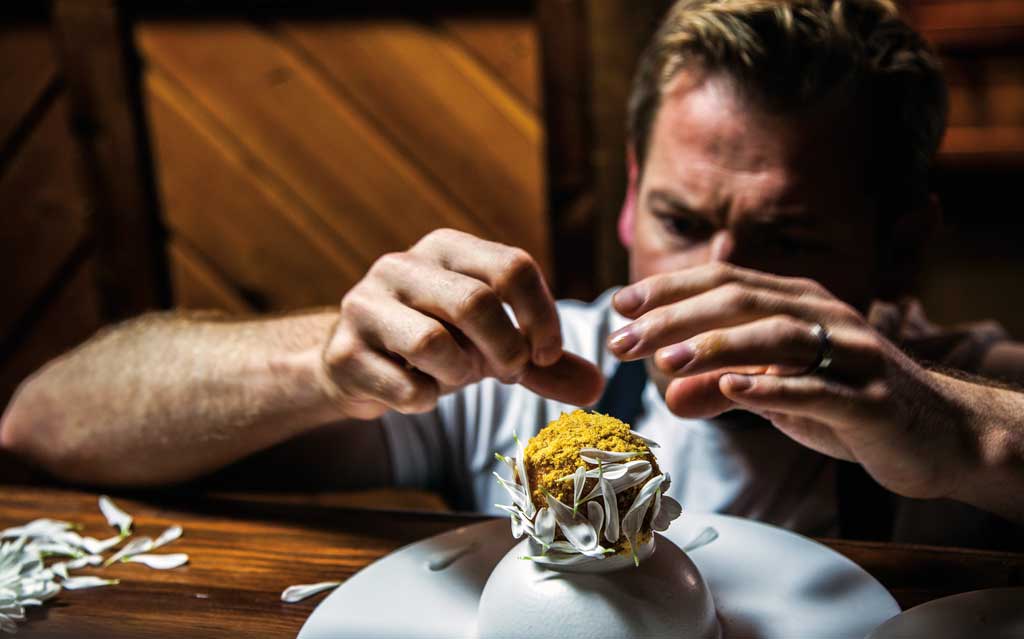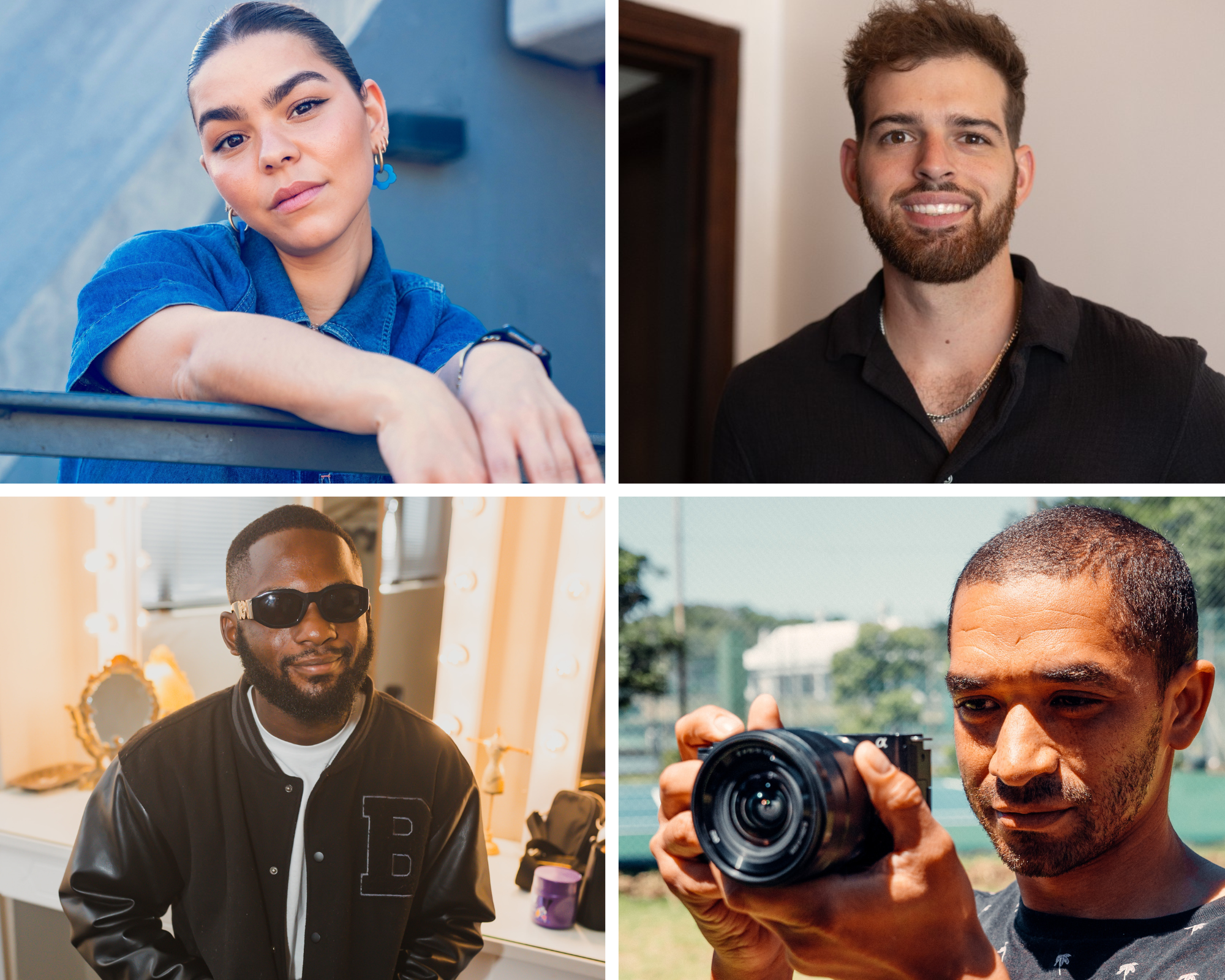In the world of gastronomy, where visual appeal is as crucial as taste, food photography emerges as an art form that tantalizes not only our taste buds but also our eyes. Today, we have the privilege of sitting down with Angelique Booyens, a masterful chef and food photographer who skillfully wields her lens to capture the sublime beauty of her exceptional culinary creations. With her exceptional skills and creative vision, she turns food into art, leaving her audience mesmerized and craving more.
Please tell us a little about yourself.
I’m a 27-year-old food photographer and videographer based in Stellenbosch. Originally from Pretoria, I relocated with my family to Stellenbosch in 2017, where I completed my BCom degree in Entrepreneurship and Innovation at Stellenbosch University.
I really enjoy continuously learning new skills, exploring new places, and engaging in various creative activities like hand embroidery and painting. Cooking is one of my favourite hobbies, and of course, the best part is trying the variety of dishes I get to make.

You’re a photographer and a foodie. Which love developed first?
My love for cooking and baking developed at a young age, inspired by my dad’s Sunday cooking and trying a variety of dishes when we travelled. During my studies, I began documenting my “culinary creations” by taking photos of the vegan, gluten-free, everything-free smoothie bowls I made. I started sharing these photos on a separate Foodie Instagram page, although initially, I didn’t have much knowledge about photography and mainly relied on automatic mode.
However, my desire to improve my skills prompted me to seek online resources. I delved into YouTube videos and learned a great deal from small online courses focused on food styling, composition, and camera usage. Additionally, I had the privilege of learning from friends I made within the industry who shared valuable insights with me. Through self-teaching, and learning from my community, I got to call myself a photographer.
Like any learning process, I encountered a fair share of trial and error. Even now, there are days when I experiment with new techniques, especially in areas like lighting. As a self-taught photographer and food enthusiast, I sometimes experience moments of imposter syndrome, fearing that someone might see through it all. However, I rely on my natural instinct and the knowledge gained through countless hours of practice and learning from mistakes. Overall, my journey in food and photography has been a culmination of passion, exploration, and a great amount of continuous growth.
What is it about food that you love so much?
Food is a form of art for me. It has this profound ability to bring people together, create lasting memories, and evoke emotions. For me, food is not just about sustenance; it’s an experience that engages all our senses and transports us to different times and places. Through food, we can explore different cultures, traditions, and flavours, broadening our horizons and deepening our understanding of ourselves and the world around us.

What is it about photography that you love so much?
My love for photography stems from the ability to capture the beauty of dishes and convey their stories through images. I always shoot with the goal of creating photographs that evoke a sense of familiarity, making viewers feel like they could easily recreate the dish at home or enticing them to reach out and take a bite. I am passionate about showcasing textures, colours, and details of food through my lens.
Walk us through your creative process. As a food photographer, how do you plan and execute your shoots? How much work goes into executing a shoot?
I begin by seeking inspiration from various sources like food magazines, cookbooks, Instagram, and Pinterest. I present these ideas to the client and create a shoot list, including specific angles and setups I wish to capture and recreate.
To enhance the storytelling aspect, I create a ‘swipe-through’ mood board that acts as a visual guide. It helps me maintain consistency and convey the desired aesthetic throughout the shoot. Along with planned shots, I also allow room for spontaneous creativity, capturing additional moments that add to the overall story.
Before the shoot, I source props and ingredients, ensuring they align with the envisioned narrative. Prior to starting, I thoroughly read the recipe or concept and identify key shots, especially for video shoots, that will highlight the essential aspects of the dish or product.

What is one thing you wish you’d known or done before starting in food photography?
Perfection is a waste of time. There is value in sharing your beginner work rather than withholding it due to fear of failure. Starting from where you are and consistently working on improving your skills and overall product is more important than constantly critiquing your own work and feeling that it is never good enough. Perfection is subjective and relative to each individual. Embracing imperfections and learning from them can lead to growth and greater artistic expression.
What has been some of your biggest hurdles in the food/ food photography industry?
Maintaining the visual appeal of the food, particularly when working with all-natural ingredients and not resorting to artificial enhancements. I don’t like the waste of food, and everything is always edible after a shoot. I discovered that using everyday cooking oil can be a simple yet effective solution to preserve the juiciness and appetizing appearance of meat, for example.

In your opinion, what makes up the perfect food photograph?
That drip, drizzle, or pour hero shot. Capturing the essence of the dish by using good lighting, styling, and a balanced composition to tell a story with the food that evokes a sensory experience and creates the desire to taste the food.
In your opinion, what are some common mistakes that food photographers make?
Improper lighting can result in the food looking unappetizing or lacking the desired visual appeal. Insufficient or poorly balanced lighting can lead to unflattering shadows, colour inaccuracies, or an overall flat appearance.
Another mistake is overlooking small details in the shot, such as neglecting to clean the plate. Additionally, it’s important to strike a balance with food styling. While creativity is encouraged, overdoing it with props, garnishes, or excessive arrangements can distract the viewer from the main focal point—the food itself.

What sorts of things inspire you?
Exploring new cultures and cuisines is an exciting and stimulating experience that allows me to learn about different traditions, cooking techniques, and flavours. I am motivated by the opportunity to experience the world through food and broaden my knowledge.
Experimenting with new recipes, ingredients, and techniques is a great source of inspiration for me. I am driven by the possibility of creating something unique and original and the satisfaction of capturing and sharing stunning photos and videos of food.
Continually striving for perfection, I am also constantly seeking to improve and refine my skills. The challenge of mastering new techniques, perfecting a recipe, or capturing the perfect shot motivates me to push myself further.
What are some things you do when you’re feeling unmotivated and uninspired?
I take breaks from photography and cooking if my schedule permits. This pause lets me divert my attention to alternative creative pursuits such as hand embroidery or DIY interior decorating. Additionally, I invest time in consuming fresh content like cooking books, food magazines, and innovative food videos. I analyse different shooting techniques and explore ways to experiment with my usual style and challenge myself, igniting a renewed sense of excitement for my return to cooking and photography.

How do you juggle being an entrepreneur and a food photographer?
Juggling the roles of an entrepreneur and a photographer can be challenging, but it also offers unique advantages. While it can be overwhelming to handle all the responsibilities typically assigned to a team in a traditional studio, working alone provides me with complete creative control and pushes me to exceed my creative limits.
Seeking advice and guidance from various sources has been instrumental in managing my business effectively. I receive valuable insights from my dad, who shares his wisdom based on his own entrepreneurial experience. Additionally, connecting with industry professionals and individuals I’ve met through platforms like Instagram has made a significant difference. Their support and expertise have formed a village of support that has played a crucial role in my journey and where I am today. Their collective knowledge and advice have helped me navigate various aspects of my business.
While balancing the roles of an entrepreneur and a photographer can be demanding, the creative freedom and the invaluable assistance from my support network have been instrumental in shaping my success.
What camera do you shoot with?
What are some of your favourite lenses to use for your food photography?
100mm f/2.8L for those detailed close-up shots of the food.
24-70mm f/2.8 for a bit more versatility when I’m shooting at restaurants.

What is something that people would be surprised to learn about your job?
One surprising aspect of my job is that most of the food I photograph is made from scratch. I put in the effort to prepare the dishes myself, ensuring authenticity.
Another surprising fact is that, despite capturing tempting dishes, I don’t consume everything I create. While I do taste most of the food for quality control and to understand its flavours, I always find someone willing to enjoy the delicious meals after the photoshoots.
What advice would you give to aspiring food photographers wanting to pursue a similar career?
Keep experimenting with new techniques and styles, and use social platforms to share your work and connect with the photography community. Networking, collaborating, and seeking feedback from experienced industry professionals can be invaluable in your growth.
Enroll in short courses, do your market research, and never stop learning. Photography is a rapidly evolving industry, and staying updated with the latest shooting styles and techniques is crucial to stay competitive.
Reach out to local brands and restaurants. Offering to do free shoots for them can help you build your portfolio while gaining practical experience and establishing connections. If you’re fortunate, these opportunities may lead to paid projects or even long-term partnerships. Building strong relationships with clients is essential for long-term growth.
Remember, persistence, passion, and a commitment to continuous improvement are key to succeeding in the photography industry. Keep pushing your boundaries, stay connected with the community, and embrace opportunities for learning and growth.

Anything else you’d like to add?
I am immensely grateful for the opportunities and trust that small businesses, some of which I still collaborate with today, have afforded me. They have taken leaps of faith by trusting me with their creative vision and allowing me to grow alongside them. It’s truly humbling to reflect on the fact that I am able to make a living doing what I love.
I started my journey shooting in front of a window on my parents’ front door floor, and now I have the privilege of shooting on location and in studios. The ability to create my own schedule and the luxury of selecting clients who align with my creative vision makes my work much more fulfilling. It’s a seamless experience when I collaborate with individuals who appreciate my work and challenge me to explore new and exciting possibilities together.
I am constantly inspired by the growth and evolution of my career, and I am deeply grateful for the support of those who have believed in me along the way. It’s a testament to the power of passion, perseverance, and the relationships I’ve built with clients and fellow creatives. I look forward to continued growth, pushing boundaries, and creating meaningful work that resonates with both myself and those I collaborate with.









